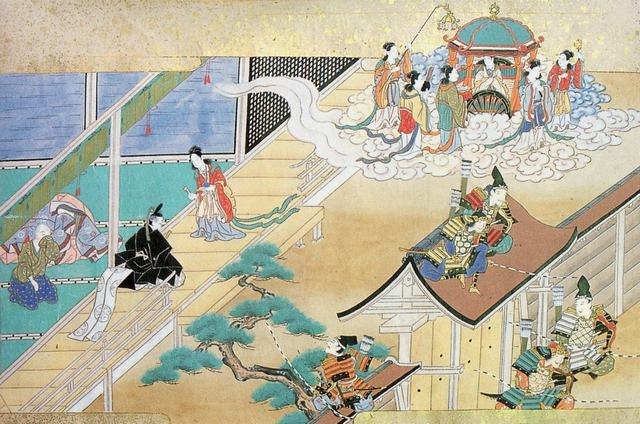
Get ready to be thrown way, way back for today’s Throwback Thursday, ScienceFiction.com’s ongoing column dedicated to the great sci-fi of the past.
‘Kaguya-hime no Monogatari’ (The Tale of Princess Kaguya) is not truly sci-fi in the way we often think about it. After all, it’s set in a time period long before the first science fiction, ‘Frankenstein’, was written. It’s hard to expect to play with science in the way we expect these days. But, on account of the eponymous Princess Kaguya being from the moon, it’s sometimes cited as early sci-fi.
The story is very different from traditional Western stories. We usually expect some sort of moral from our older tales, or at least a purpose and an end. You don’t really often find that in Japanese stories, even in modern days ones, such as ‘Ten Billion Days and One Hundred Billion Nights‘, and I think it’s good for us to embrace this different kind of storytelling.
The tale of Kaguya starts with an impoverished and childless couple who cut bamboo for a living. One day, the bamboo cutter finds a tiny baby when he cuts into a shiny stalk of bamboo. He takes the baby home because that makes sense to him, and he and his wife name her Kaguya and raise her. From that point on, he finds gold in every stalk of bamboo he cut and naturally becomes rich.
Meanwhile, Kaguya somehow grows into an actual woman-sized human and becomes beautiful beyond measure. Naturally, many suitors desire her. Her father decides to stop this by saying they could only have their hand if they get an impossible item… like dragon scales, or other things that probably don’t exist, or are hard to find.
I know you’re thinking this sounds like you know where it’s going… one of them is going to win her heart, and they deceive her father? Nope, every single suitor fails, and one even dies.
Then Kaguya starts crying about other things, turns down the emperor’s advances to marry her, and she realizes she’s from the moon. The stories are different about why she’s on Earth. Some say it’s because she committed a crime, and others state that she was hiding from a celestial war. Whichever, it feels sort of out of nowhere. Then she announces she has to go back and she does. In the meantime, her fellow-moon people place a robe on her and she forgets all about living as a human and any compassion she had for them.
The end.
Why the suitors story line? Who knows. Why the Emperor storyline? Again, who knows. Well, other than he tries to prevent her from leaving, even if she won’t marry him. Of course, this is thinking of it in a western sense.
From another side, the story is about the feeling of losing something beautiful due to circumstances outside of your control. It’s about dwelling in the mystery of who Kaguya is. It’s not about the plot. It’s about the feeling and the setting.
Which… by the way…. I’m sure you’re thinking is not very sci-fi. Sure, it’s more fairytale than sci-fi, but it does have some key elements.
Kaguya as an other being learning about humans is a very common trope. Plus, brainwashing is definitely cliche in science fiction.
Is it really sci-fi? Probably not. But in the context of the time, and how we usually associate space with the genre, I think there is enough leeway to say it is a prototype or a step in that direction.
If you’re interested, there are a million different version of the tale available in novel, comic book, and movie form. There is also a great movie by Studio Ghibli that takes the tale, gorgeously animates it, and couches it in a more traditionally Western story structure.
<iframe width=”640″ height=”360″ src=”https://www.youtube.com/embed/tM6hcHp0_kU” frameborder=”0″ allowfullscreen></iframe>
